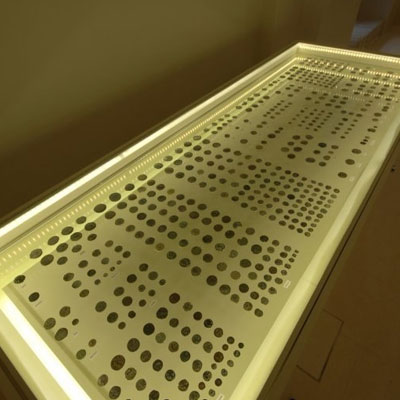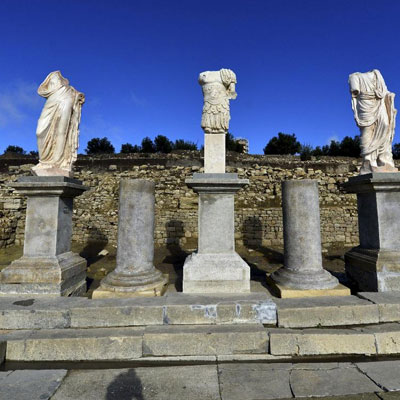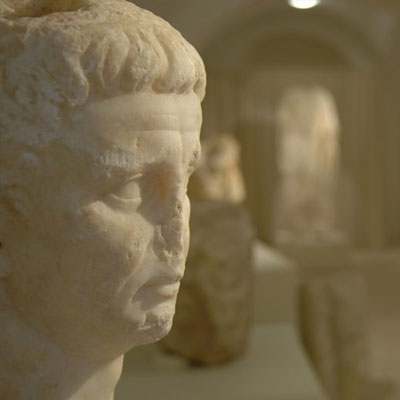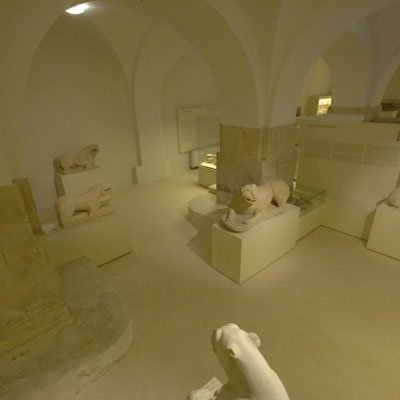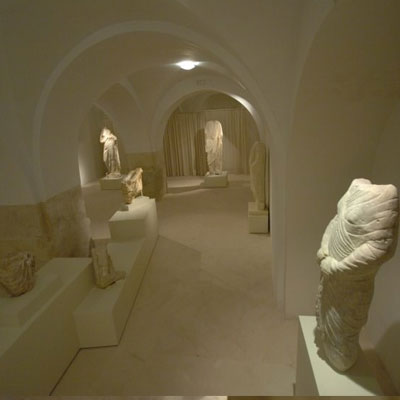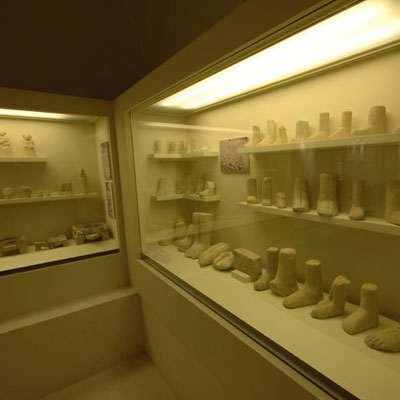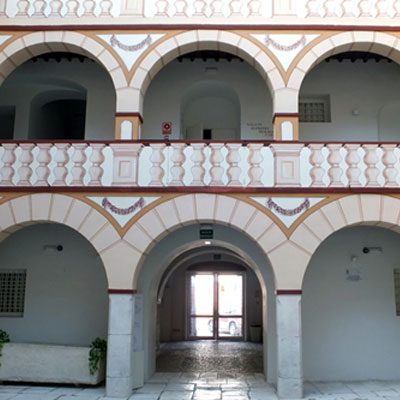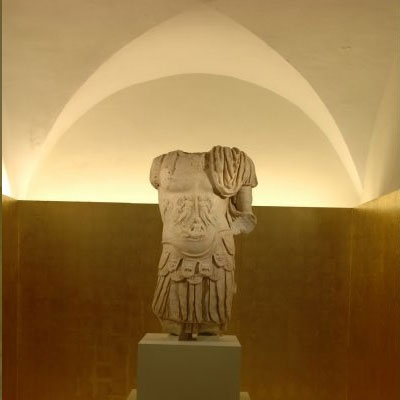Municipal Historical and Archaeological Museum
Santo Domingo de Henares, 5. (House of the Tercia).
957671757.
www.baena.es
Email: museohistórico@ayto-baena.es
Schedule: please, check with turismo@ayto-baena.es or +34 957 671 757
Ticket prices: General admission € 2. / € 1 for groups of more than 10 people, retirees, pensioners and children under 12 years old.
Guided tours: The guided tour must be booked in advance at the tourist information office.
APP. (Play Store – Torreparedones). In the Torreparedones Archaeological Park and in the Historical and Archaeological Museum, there is an application for individual visits and a free tablet loan service with the APP.Museo Histórico y Arqueológico Municipal
The Museum is located in the Casa de la Tercia, a building built between 1792 and 1795 to store grain and seeds and as an oil cellar. It was destined to collect the part of the ecclesiastical tithes and other income corresponding to the Crown. In 1841, the definitive abolition of the rents paid to the church, after the Mendizabal Confiscation, made the intended use of the building disappear, which became private property. At the beginning of the 20th century it was adapted and used as an inn and during the civil war, between 1936-1939, it was used as a prison. Since 1960 the City Council was the tenant of the property until in 1984, it incorporated it into the municipal patrimony. During 2010 the building underwent a major restoration as the Museum headquarters.
ROOM 1.1 ..- Prehistory. The Museum exhibits, alluding to paleontology, various plant fossils from the Primary or Paleozoic Era, the Secondary or Mesozoic Era (of which ammonites are characteristic) and Tertiary or Cenozoic with the bivalves of Miocene chronology as the best known specimens. The oldest material remains of the term of Baena date back to the Lower Paleolithic (700,000-100,000 years BC), they are examples of the first artifact industries associated with the culture of the worked stones. From the rest of the prehistoric periods, the Museum has an interesting collection of tools (the lithic industry is widely represented, with abundant ceramics.
ROOM 1.2.- Iberians. The Iberian culture is the result of the transformation experienced by the indigenous populations of the south when they were influenced by Mediterranean peoples (Phoenicians and Greeks). The Iberians lived in fortified settlements (oppida) located in elevated areas, easily defended, and the base of their economy was agriculture, livestock, mining and textile industry.
Baena has numerous places of archaeological interest where the wealth of Iberian culture has been contrasted. The great deposits of the Izcar style, Cerro del Minguillas, Torreparedones, Cerro de los Molinillos and Torre Morana, constituted true walled urban centers.
A fundamental role in the Iberian world was constituted by art, represented in the museum by a collection of zoomorphic sculptures, among them the lion found in the Cerro de los Molinillos or the lion of Ipponuba (Cerro del Minguillar). These feline sculptures were used in the decoration of the tombs belonging to the aristocratic elites of the time.
ROOM II.- Rome.– As of the arrival of Rome to the Iberian Peninsula (218 BC), the Roman would gradually impregnate the ways of life and customs of the peninsular tribes, since in addition to political and administrative integration of the territory in the machinery of the Roman state, a cultural integration would take place.
In Baena, this process is particularly noticeable in the Torreparedones site, where archaeological excavations have brought to light a city – possibly Ituci Virtus Iulia cited by Plinio – that reached the status of a colony or municipality during its heyday in the 1st century AD
The discovered forum, located next to the market in the area of the city, represents one of the best known examples of Roman architecture from the imperial era. The square was decorated with large sculptures, of which a thoracata or military representation of the Emperor, a bust of Emperor Augustus and another of Claudius, and two representations (a robe and a female sculpture) of characters from the imperial family are preserved. In the Baenense term other important urban nuclei were located in Roman times: Iponoba (Cerro del Minguillar) and the Municipality ContributoIpscense, then Resp República (Cerro de la Aldea, next to the Izcar farmhouse. the emperor Vespasian.
ROOM IV.1 Numismatic Cabinet. The museum’s numismatic collection is made up of more than 2,000 coins covering mints from an important period of the Roman Empire. Other medieval and Arab coins are also on display … in addition to the Iberian pieces that are shown in Room I.
ROOM IV.2 Architecture of Rome. In the room various construction elements are exhibited, fragments of the disappeared architecture: capitals and bases of columns and other remains.
ROOM V. THE ROMANIZATION. Throughout the centuries of Roman rule over the provinces of Hispania, the customs, religion, laws and in general the way of life of Rome, was imposed with great force on the indigenous population. In this room, the existence of several cremation urns belonging to members of the Pompeya family, from Torreparedones, is documented. A Columbarium is recreated with original pieces, originating from the funeral rites used in the Roman world. In addition to these cremation urns, the room contains a collection of ceramic objects from the Roman period, among which the pieces of terrasigillata, skylights, terracotta, glass, etc. stand out. Metallic elements, glasses, buttons, fibulae, phallic amulets, small bronze figures, decorative appliques etc … are shown.
The room also presents instruments from Roman agricultural factories: cereal and oil mills and agricultural tools.
ROOM VI. THEMATIC EXHIBITIONS.
ROOM VII. THE MIDDLE AGES.
Room VII.1. The Visigothic Hispanic world. Late Antiquity is represented by various materials from the Visigothic period (plates decorated with a funerary atmosphere). The little news that is had of the rest of this period refers mainly to the activity that developed the church. In Baena this Christianity was evident in the rural churches of places like Izcar and Cerro de los Molinillos. In the first case we must mention the famous Chrismon, found inside a tomb, which constitutes one of the best representations of the monogram of Christ.
Room VII.2. The Muslim period. The first news of Baena in the High Middle Ages dates from the year 899 on the occasion of the rebellion of Omar ben Hafsun, the year in which he seized the place as a previous step to the conquest of Córdoba. That Arab Baena was called Bayyana. The room houses various household objects from that period and ceramics.
Room VII.3. Modern and Contemporary Age. Some shields of the locality are exposed. Like the Municipality.
ROOM VIII. JUAN ALFONSO DE BAENA. It offers some fundamental documents of the Municipality, together with the gallery of Baena characters, among which Juan Alfonso de Baena and José Amador de los Ríos stand out for the greatness and importance of their works. One of the jewels in the room is the first color facsimile of the Baena Songbook, made exclusively for study and display in this museum.





